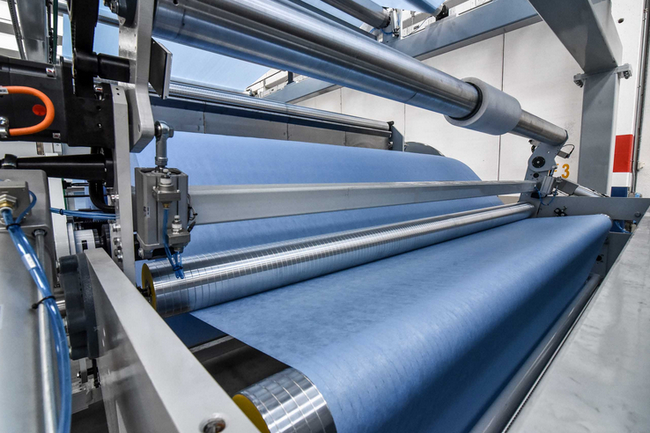What is Lamination?
Lamination is the process of manufacturing a material in multiple layers, so that the combined physical and mechanical characteristics of each layer make for a stronger, more resilient composite material.
- What is Lamination?
- Nonwovens Lamination main areas of application
- Nonwovens Lamination techniques and advantages
- The Best Nonwovens Lamination machine
The earliest examples of lamination made use of natural adhesives such as beeswax, gums, tar and substances derived from animal bones. As technology progressed, we discovered the use of sealing wax as the first hot-melt adhesive. In the 1930s a wet lamination process (with the use of solvents) was used to bond shirt collars (a woven fabric) with cellulose acetate. This process was deemed inconvenient, and by 1948 progress was made in dry lamination using polyvinyl acetate plasticized with dibutyl phthalate.

Nonwovens lamination, in particular, is the process of bonding two or more layers, at least one of which is a nonwoven fabric, with the objective of obtaining improved strength, stability, sound insulation, appearance, or other properties. Although less expensive to manufacture, nonwoven fabrics tend to be weaker than woven ones, and the lamination process comes into play just when there is the need to strengthen this nonwoven material for a variety of uses.
The bonding is typically done with the use of adhesives (or heat) and pressure, making it possible to manufacture nonwovens products, equipped with a waterproof layer, that are breathable, soft, comfortable and suitable for printing.
Shortly after the beginning of the industrial production of disposable diapers, nonwoven laminated products, such as the textile backsheet, appeared. From the early days of dry lamination various adhesives were produced, including hot-melt powders.
Breathability was an issue with lamination in the early days, but the processes used today are capable of producing breathable, porous materials that maintain their waterproof properties.
